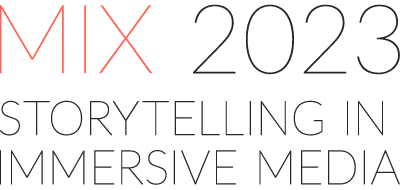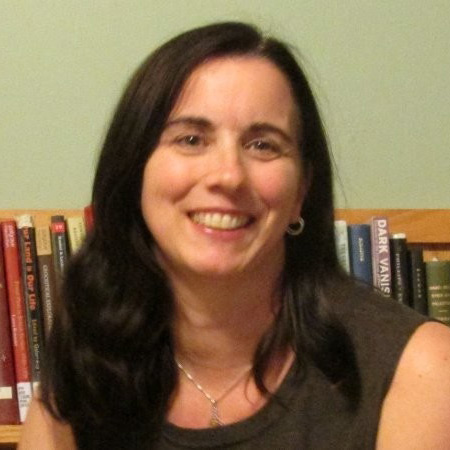Panel 3: Endless Horizons: Teaching with Narrative
Chair: Sarah Gibson Yates
3.01 – The Appeal of an Endless Horizon: Teaching narrative design inside a massive multi-authored sandbox
Dr Judith Pintar (University of Illinois Urbana Champaign)
The Quad Game is a work of parser-based interactive fiction (IF) begun in 2015 at the University of Illinois in a course that teaches the IF programming language Inform. On the first day of class, students wander the massive game, which is set upon the map of our campus. As of writing more than 100 authors have produced a 257,728-word source text that compiles into 739 rooms with 1506 people and things inside them. There are 53 narrative end points, but no ending.
The “endless horizon” of the game results from the fact that the game will never be finished. Although it retains the geographical boundaries of the campus, it extends endlessly backwards and forward into time and downward into catacombs where squirrels and zombies and long dead professors dwell. The writing is uneven, and the game play is buggy. Each cohort improves the work of the previous group as it expands the map into unexplored areas, leaving another crop of bugs for the next group to fix. That’s the messiness and the magic of a sandbox.
Immersion in the Quad Game, as it is explored in this presentation, does not arise from playing the compiled game. Immersion develops as the coded logic of the world is more deeply comprehended, and its designers join in the collaborative experience of narrative world building. The design experience is often game-like – it is a sincere challenge in a narrative so big to add a piece to the world without disturbing other parts or crashing the whole.
The presentation will confront the question “Is the game fun to play?” Well, it is if you like that sort of the thing. But the real answer is that it doesn’t matter very much. The fun of the Quad Game is writing the Quad Game.
3.02 – Exploring Writing Students Views on Writing with AI
David Devanny (Falmouth University) and Jack McGowan (University of Worcester)
How is artificial intelligence shaping the future of the craft and profession of writing? How do graduating Creative Writing students perceive and relate to AI text generation? In what ways might Creative Writing pedagogy evolve to meet student participations with AI? This small research project, written specifically for MIX 2023, is centred on feedback collected from year three BA Creative Writing students at AI writing workshops in Spring 2023, at Falmouth University and the University of Worcester. For this particular cohort of writing students (2020-2023) there have been major shifts and developments in the quality, availability and public perceptions of AI writing machines between their enrolment in September 2020 and their final semester in 2023.
With the increasing refinement of AI text generation, and increased accessibility through chatbot formats, like Open-AI ChatGPT, the discourse and associated expectations of the role of AI in writing has shifted considerably. Some of the media responses to these developments have detailed a range of worries and concerns: Jeremy Vine’s BBC Radio 2 show ran ‘Are writers now obsolete?’ as the lead debate (Vine, BBC Radio 2, 06/02/23), and there have been concerns raised about plagiarism in academic writing (‘Now AI can write students’ essays for them, will everyone become a cheat?’ Reich, Guardian, 28/11/22; ‘ChatGPT Is Making Universities Rethink Plagiarism’ Barnett, Wired, 30/01/23). Others have taken a more positive view styling creative writing graduates as ‘prompt authors’ and considering some of the new opportunities this may create for storytelling in the 21st century. This paper, and the associated bespoke workshops, seek to explore what students of creative writing, poised to enter the creative industries, make of writing by and with machines.
3.03 – Teaching Interactive documentary
Kristine Kelly (Case Western Reserve University)
This paper explores how both reading and making interactive documentaries (i-docs) in the college classroom fosters ways of thinking and writing that are non-hierarchical, collaborative, and layered. I-docs are “real stories,” a paradoxical form involving a design that requires some degree of active participation by the interactor. Judith Aston defines the i-doc as a form engaged in “the construction and representation of ‘reality’ brought about by the human-computer interface,” where interactivity offers a means of building connections among self and others to understand aspects of the social world (i-docs.org). As a teacher of writing, I’m interested in thinking about how i-docs promote layered (rather than linear) thinking among student readers and writers, and how they might turn critical analysis into a process of making creative connections, thus offering an alternative to the thesis-driven, so-called authoritative essay form.
This paper, thus, considers the i-docs from a pedagogical perspective and questions how one might use the form to teach approaches to critical analysis that work cooperatively to explore complex understandings about historical, cultural, or scholarly issues. In this talk, I discuss i-docs like Nicole Paglia and Anrick Bregman’s The Most Northern Place and Sharon Daniel and Erik Loyer’s Exposed to consider how these designers document human-centered issues in ways that deliberately engage human interactors, making them both collaborative and complicit in the real story’s production of meaning. I use these models to consider examples from student-made i-docs and project reflections to explore how, in offering an alternative to causal modes of knowledge production, the i-doc promotes a multi-layered, process-oriented, and collaborative way of making sense of aspects of our shared realities.



